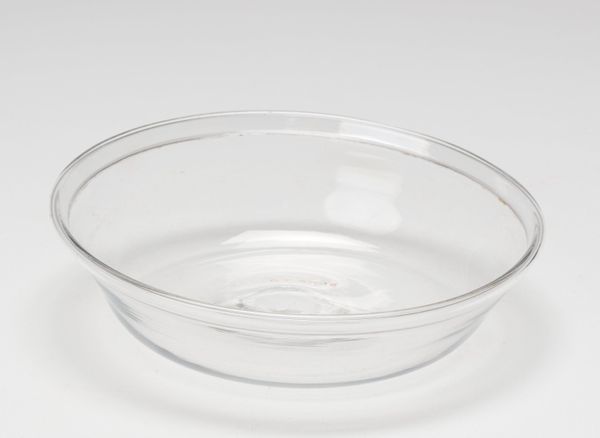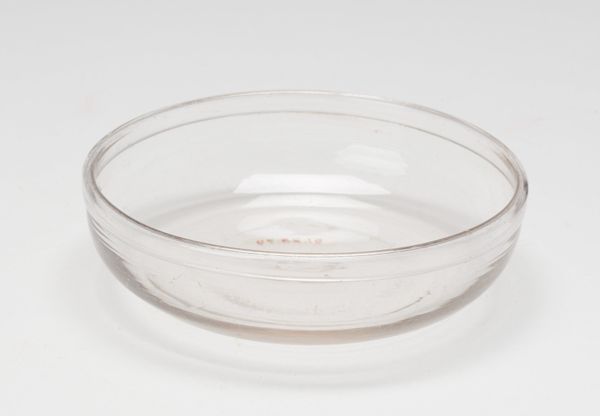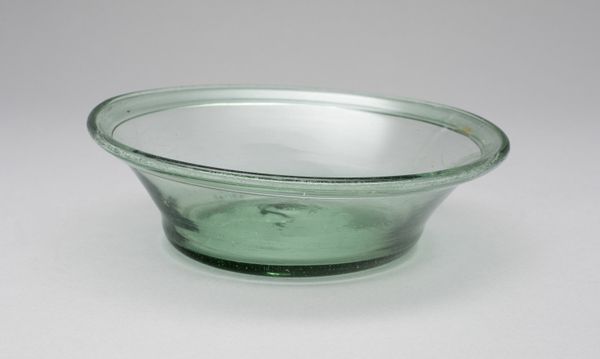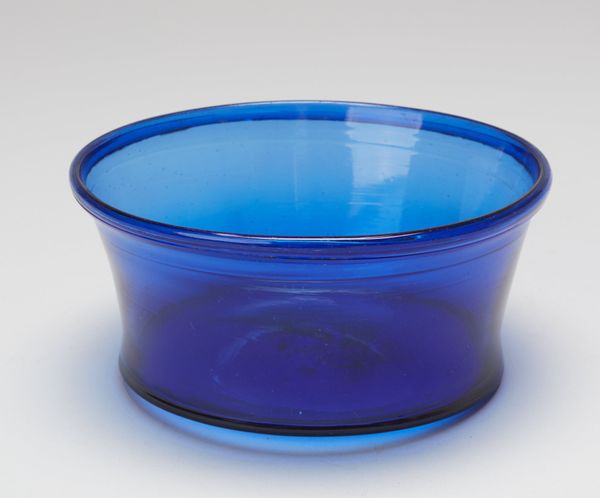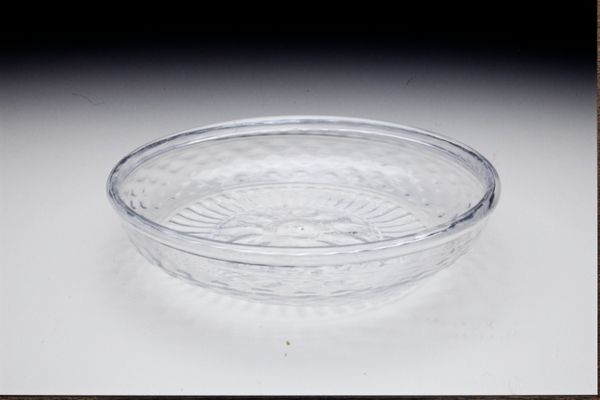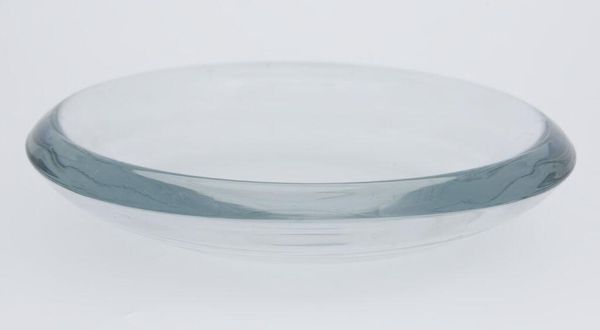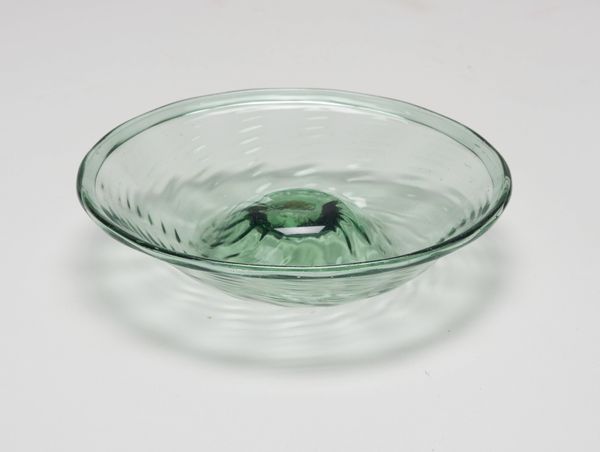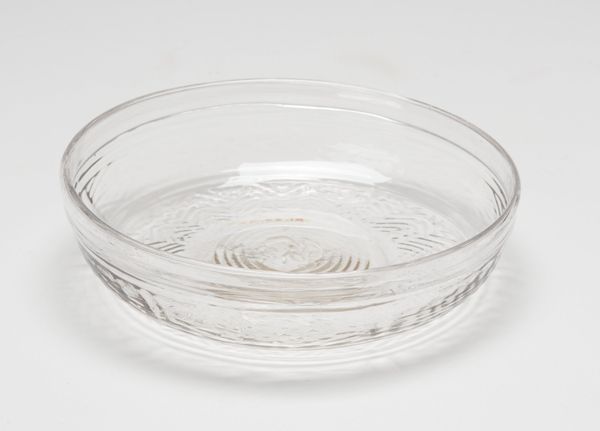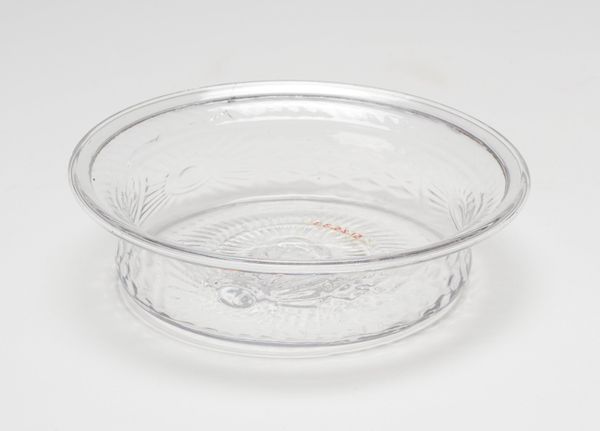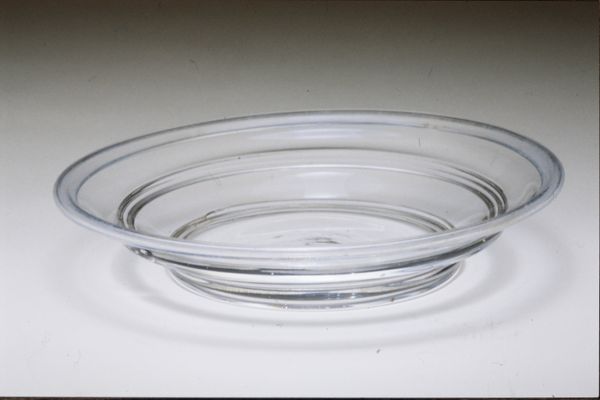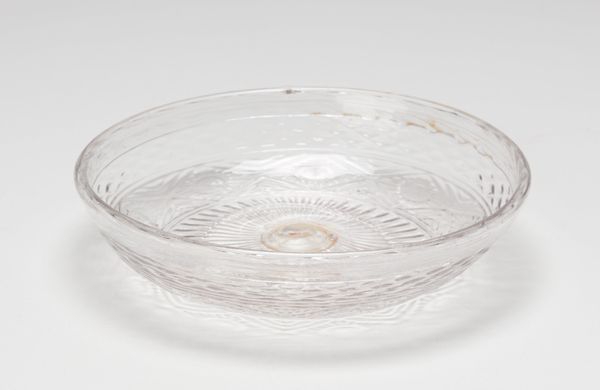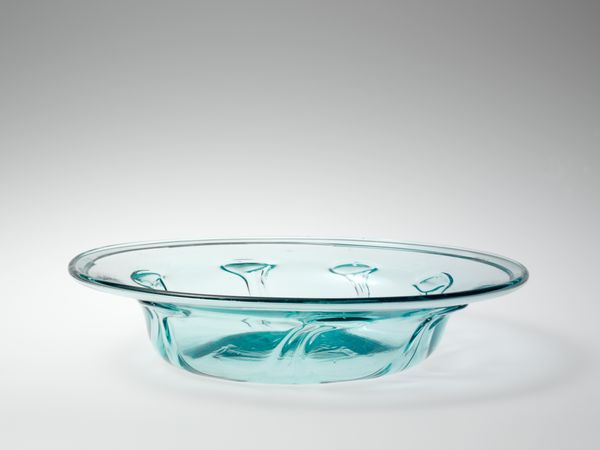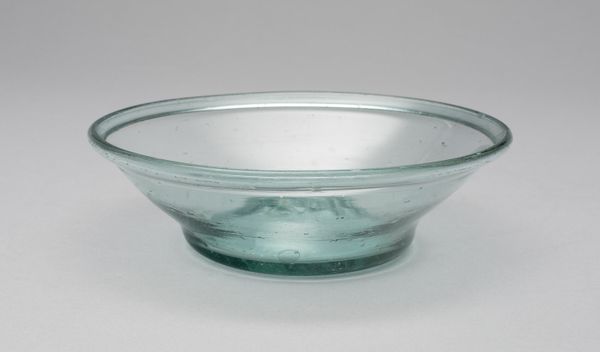
ceramic, glass
#
product displayed
#
ceramic
#
glass
#
ceramic
#
decorative-art
Dimensions: 16.2 cm (6 3/8 in.)
Copyright: Public Domain
Editor: Here we have an object made around 1825 by the Mantua Glass Works, simply titled 'Bowl'. It's surprisingly delicate for something made of glass, with this soft blue hue. I find myself wondering about the everyday lives that it might have touched. What story do you think this object tells us? Curator: Well, objects like this 'Bowl' speak volumes about the social and economic history of their time. Consider the market forces at play. Mantua Glass Works, operating in the 19th century, had to navigate evolving tastes, technological advancements, and competition. Were they catering to an elite clientele, or trying to reach a broader market through affordable design? Editor: That's fascinating! It does feel like something that could be accessible. Curator: Precisely! And the bowl's very existence reflects developments in industrial glass production. How did Mantua's methods compare to European glassmaking centers? Were they innovators or followers? Answering these questions positions the 'Bowl' within the broader narrative of 19th-century industry and global trade. Editor: So it’s more than just a bowl; it’s a cultural artifact? Curator: Absolutely. Think about the societal context: How did the rise of a consumer culture shape what items like this were produced and used for? Was this for display or function? These are clues to how people lived and expressed their social status through everyday objects. Editor: That gives me a whole new appreciation for something as simple as a bowl! I'll definitely be looking at decorative arts differently now. Curator: I'm glad to have expanded your perception! Understanding art involves uncovering these often-invisible connections to broader societal structures.
Comments
No comments
Be the first to comment and join the conversation on the ultimate creative platform.
